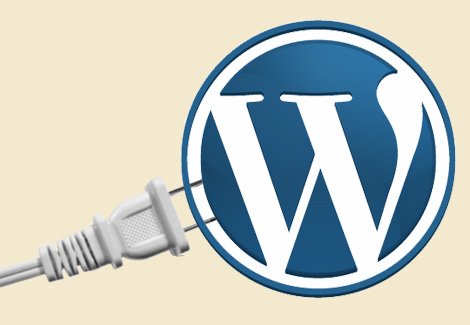Improve Your WordPress Blog’s SEO with All-In-One SEO Pack
 Every blogger wants to end up on page one of Google–or Bing, or Yahoo. . . It’s an elusive goal for many but not impossible.
Every blogger wants to end up on page one of Google–or Bing, or Yahoo. . . It’s an elusive goal for many but not impossible.
There are many services that promise to put your blog there–for a fee. I think there may be almost as many SEO-optimizing services and comapnies out there as there are blogs. But if you’re like most bloggers, you aren’t ready to part with large sums of cash each month in the hopes of winning the search-engine lottery and finding yourself at the top of the rankings.
Fortunately, you don’t have to.
While clearly the best way to improve your blog’s position is to create compelling, consistent content that engages your readers, sometimes we all need a little help.
Well, help has arrived. For bloggers, it comes in the form of a plug-in called the All-in-One SEO Pack. This plug-in is not new, nor is it the only one. It is, however, for its simplicity, one of the most powerful SEO plugins available for WordPress. It has both free and paid versions. In this tutorial, I will be covering the free version. I haven’t yet felt the need to upgrade to the pro version.
This plugin is as easy to install as any other WordPress plugin. You can either download it from the website and then use the plugin installer to upload it to your blog or you can use the installer to do a search for it and install it that way.
Once you’ve installed it, click “activate” so you can get started.
You’ll find the customization page for this plugin under “Settings” in your left-hand column. Scroll down below the ads–that’s the price of a “free” plugin.
First, make sure the “enabled” button is checked. Next you’ll need to fill in the “home title”, which is how you want your site to show up when it comes up in the search engines. It should be less than 60 characters.
Next is your home description—the overall description of your site and should be less than 160 characters. This is often what shows up under the Google Search results, so make it descriptive and appealing enough that they’ll want to click on you. And use your prime keywords in the description.
Home Keywords—the basic keywords people who want what you do are going to look under.
If you aren’t sure what kind of keywords to use Google Adwords has a great keyword finder http://bit.ly/q8kMfH I highly recommend it and it’s free. You don’t always want the keywords with the biggest searches, you want the ones that will get you the most bang for your buck. I have a number of keyword searches that don’t necessarily rank huge, but they’re consistent and would give me more than enough business if I was the top pick on them. So, look for keywords that fit your niche and have a decent amount of searches associated with them.
Don’t worry about the other settings. It’s best not to mess with them in the beginning anyway.
Do add your Google Analytics ID in the box provided. Your analytics ID is the code on your analytics home page to the left of your blog’s URL that begins with UA. Copy and paste it in that box.
Before moving on, be sure to update options at the bottom of the page.
Now, you are going to go in and fill in the SEO information for each page and post on your site. If you have a big site like mine and its already up it’s going to take a while. My website took three hours to complete the first time I did it. As an FYI, I had34 pages and 53 posts (mine is blogsite—blog & website combined) and about 2 dozen photo galleries (that was the real time sucker). For most of you, this is going to take a lot less time. I did SEO for every single photo in every single gallery. But it’s done and now I only have to do this as I put up each new post or page, which adds maybe two minutes for every post.
Go into the edit mode for any post or page you want to optimize. Scroll down to the bottom and you should see the box for All in One SEO pack.
You’ll fill it in just like you did on the settings. To make it go more quickly, I opened a word document and typed my keywords in there. I have different sets of keywords for different types of pages, so I grouped them. Then, I only had to copy and paste in my keywords for each post or page, depending on the category. For example, family portraits have one set of keywords, weddings have another set and art photography has its own set. Same with my social media topics. When I blog about these topics later on, I will just have to open my word document and paste in the keywords.
Warnings: Do not keyword stuff—don’t put in irrelevant keywords just to get your posts to show up. You’ll be figured out eventually and your site will disappear from the rankings. Google doesn’t like it when you don’t play by the rules so choose your keywords carefully.
Make your description match your blog post or page. It really does need to be about what’s there. One of my pet peeves is clicking on a page based on its description and finding something else entirely. Makes me think twice about visiting that site.
If for some reason, you have a post that you want to exclude (like a private page), just check the box that says “Disable on this page/post”
That’s all the harder this little plugin is to set up and use. If you begin using it consistently, it should help your blog. It’s not going to shoot you to the top of Google next week, but it will help your good posts rank better. Your bad posts? To be perfectly honest, there’s not much we can do for you there –unless you’d like to sign up for our blog-writing course. . . .
Do you use any kind of SEO plug-in on your site? Have you tried the All-In-One SEO pack? Share your comments, questions and experiences in the comment section below.
And if you enjoyed this post or found it helpful, please use the buttons below to tweet and share it with your network.







Marie, thanks for sharing your thoughts. I’ve used a few WordPress plugins to help with SEO, including this one, but I don’t believe I’m using them to their full potential.
You know WordPress … Thanks again for sharing!
great tip!
I’m curious, have you ever tried my WordPress SEO plugin? I think you’d love it 🙂
You can find it here: http://yoast.com/wordpress/seo/
Joost, I actually have your Yoast SeO plugin on my websites (including this one). I recommend All-in-One for those who are either beginning bloggers or who don’t have the time or expertise to really put yours to work. It is, you must admit, more complex than All-In-One, and not the best for everyone.
I am going to get after this plug for a friend using your page as a guide! Thank you Marie.. this is great information!
Great, Elizabeth. I’m glad it was helpful for you. If you have any questions about it, feel free to ask.